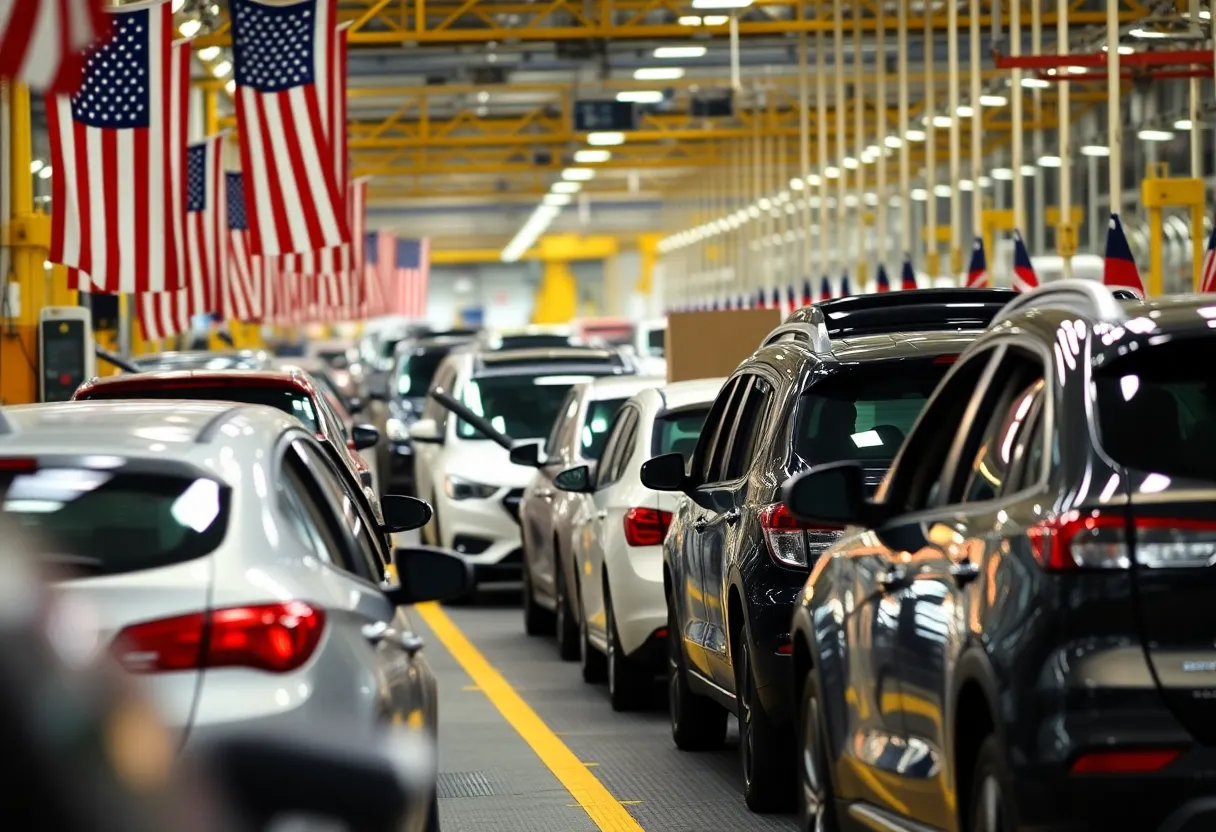

An assembly line showcasing vehicles produced in the U.S.
Want to target the right audience? Sponsor our site and choose your specific industry to connect with a relevant audience.
Prominent brand mentions across targeted, industry-focused articles
High-visibility placements that speak directly to an engaged local audience
Guaranteed coverage that maximizes exposure and reinforces your brand presence
Interested in seeing what sponsored content looks like on our platform?
May’s Roofing & Contracting
Forwal Construction
NSC Clips
Real Internet Sales
Suited
Florida4Golf
Click the button below to sponsor our articles:
Sponsor Our ArticlesBeginning April 3, President Trump will impose a 25% tariff on imported cars and auto parts, aiming to promote U.S. manufacturing. This decision raises concerns about rising costs for consumers and potential strain on the auto industry, including price hikes of $5,000 to $15,000 for new vehicles. Economists warn of inflationary pressures, while manufacturers adjust strategies to cope with changing trade policies and global supply chains. As the deadline approaches, the U.S. auto market braces for significant shifts.
Grab your steering wheels tight! President Trump has revved up the auto import scene with a bold statement: a 25% tariff on imported cars and auto parts is set to hit the streets starting April 3. Now, you might be thinking, what’s the scoop on this? Let’s break it down.
Trump is confident that these tariffs will spark a wave of buying cars made right here in the U.S. But he doesn’t seem too bothered if car prices take a hit as a result. The tariffs will cover everything from passenger vehicles and light trucks to crucial parts like engines and transmissions. And vehicles made domestically? They’ll dodge this financial bullet!
As many Americans juggle everyday living costs, the news of these tariffs comes at a time when economic concerns and inflation are on the rise. Economists are raising their hands in warning, suggesting that this tariff could lead to higher prices for everyday consumers and even nudge the economy closer to a recession.
According to a study by the U.S. International Trade Commission, we could see imports cut down by nearly 75%. Get this — prices for cars could bump up by about 5% on average as a direct result. And for those eyeing new wheels? Expect to see price hikes ranging from $5,000 to $15,000 depending on the model and make of the car.
These tariffs might prompt car manufacturers to rethink their game plans when it comes to vehicle production. Some might move production to the U.S. to steer clear of the tariffs, while others could struggle as they try to adjust to already established global supply chains. The trickle-down effect might just make its way to used car prices, too, as inventory tightens up and buyers shift gears towards purchasing new vehicles.
The auto industry is certainly feeling the heat. Big players like General Motors and Ford might face some serious financial stress. On the flip side, critics, including international car makers, are voicing their concerns, arguing that this could lead to higher prices, reduced options for consumers, and a decrease in manufacturing jobs on American soil.
In fact, Trump hinted at a moment he’s calling “Liberation Day,” pointing towards a bigger twist in trade policies. But here’s the kicker: these tariffs could complicate lives for manufacturers who rely heavily on global components. With pre-existing supply chain issues and rising material costs from earlier tariffs on materials like steel and aluminum, the stakes are getting higher.
Brands that import a significant portion of their lineups, like Toyota and Nissan, could be disproportionately impacted by these changes. With the estimated average price of new cars around $48,000 as of February, these tariffs could quite literally change the face of what it costs to drive off the lot in a new car.
Despite the pushback and uncertainty swirling about the tariffs, the administration continues to back strategies aimed at boosting domestic auto manufacturing. This stance presents a mixed bag of effects and opinions on the road ahead.
As we roll towards April 3, it’s clear that the auto industry, along with American consumers, will need to buckle up for what lies ahead. With potential price spikes and shifts in manufacturing strategies, the road may become bumpier—are you ready to navigate the twists and turns?
News Summary U.S. senators have introduced the Strengthening VA Patient Advocacy for Rural Veterans Act,…
News Summary A newly formed patient advocacy group, Ucan Ireland, is dedicated to enhancing access…
News Summary The Health Equity Alliance (HEAL) has closed its doors permanently, significantly impacting the…
News Summary The International Chamber of Commerce (ICC) has announced an upgrade to its ICC…
News Summary The Singapore International Arbitration Centre has introduced the SIAC Gateway, an innovative online…
News Summary WellSky has launched its new CarePort Care Transitions Dashboard Suite to improve case…